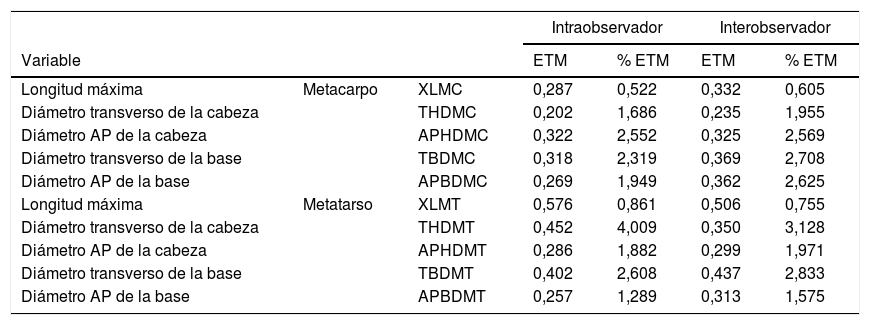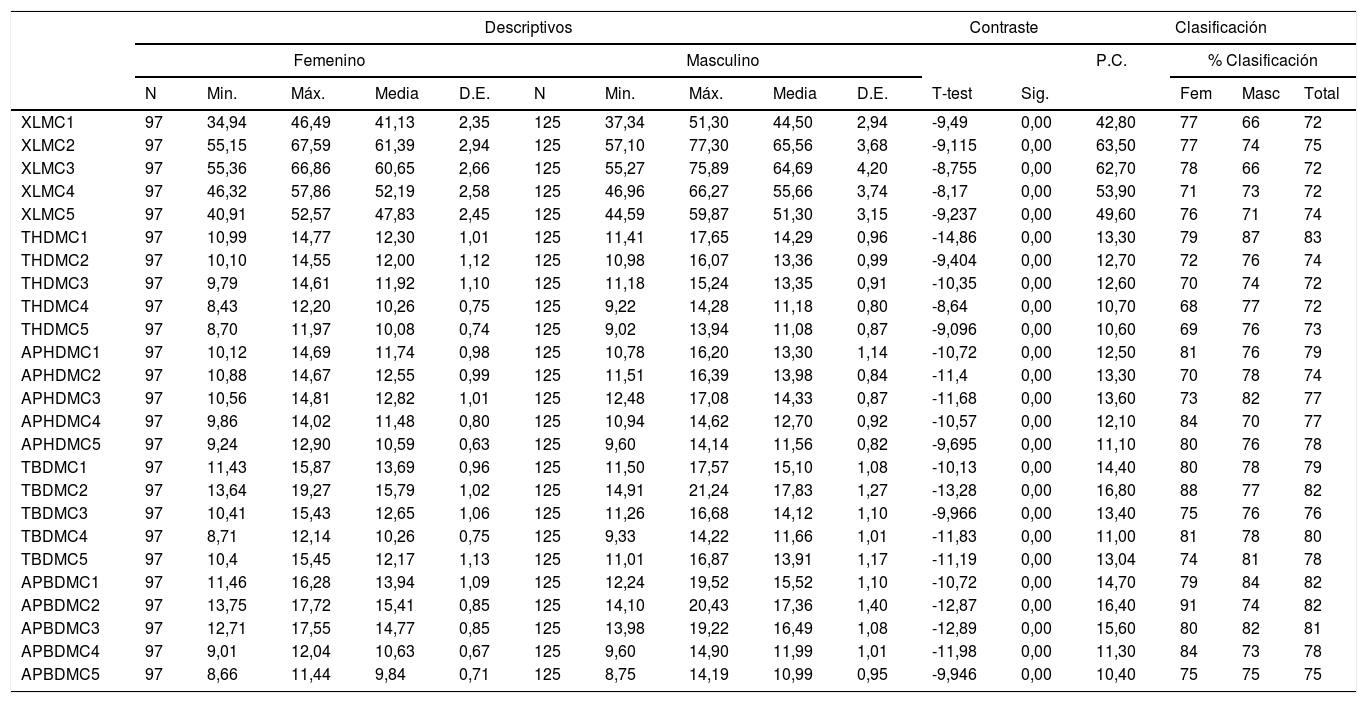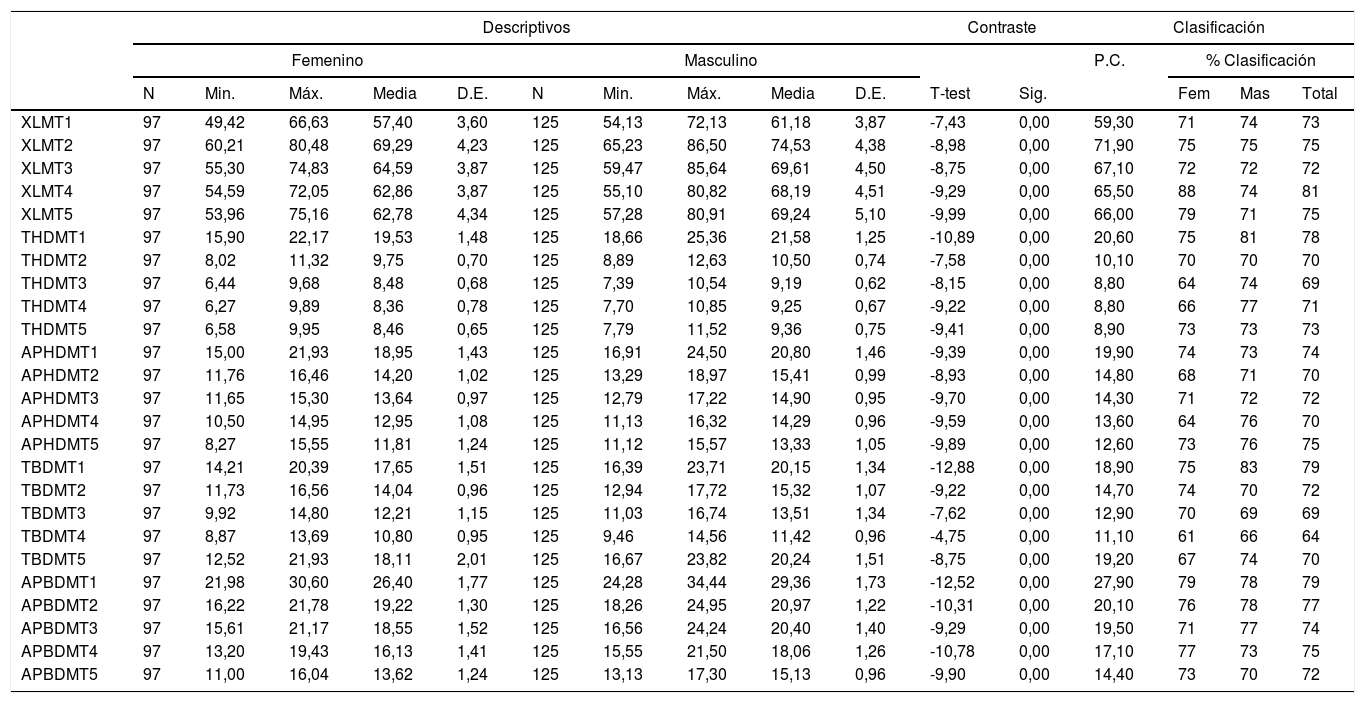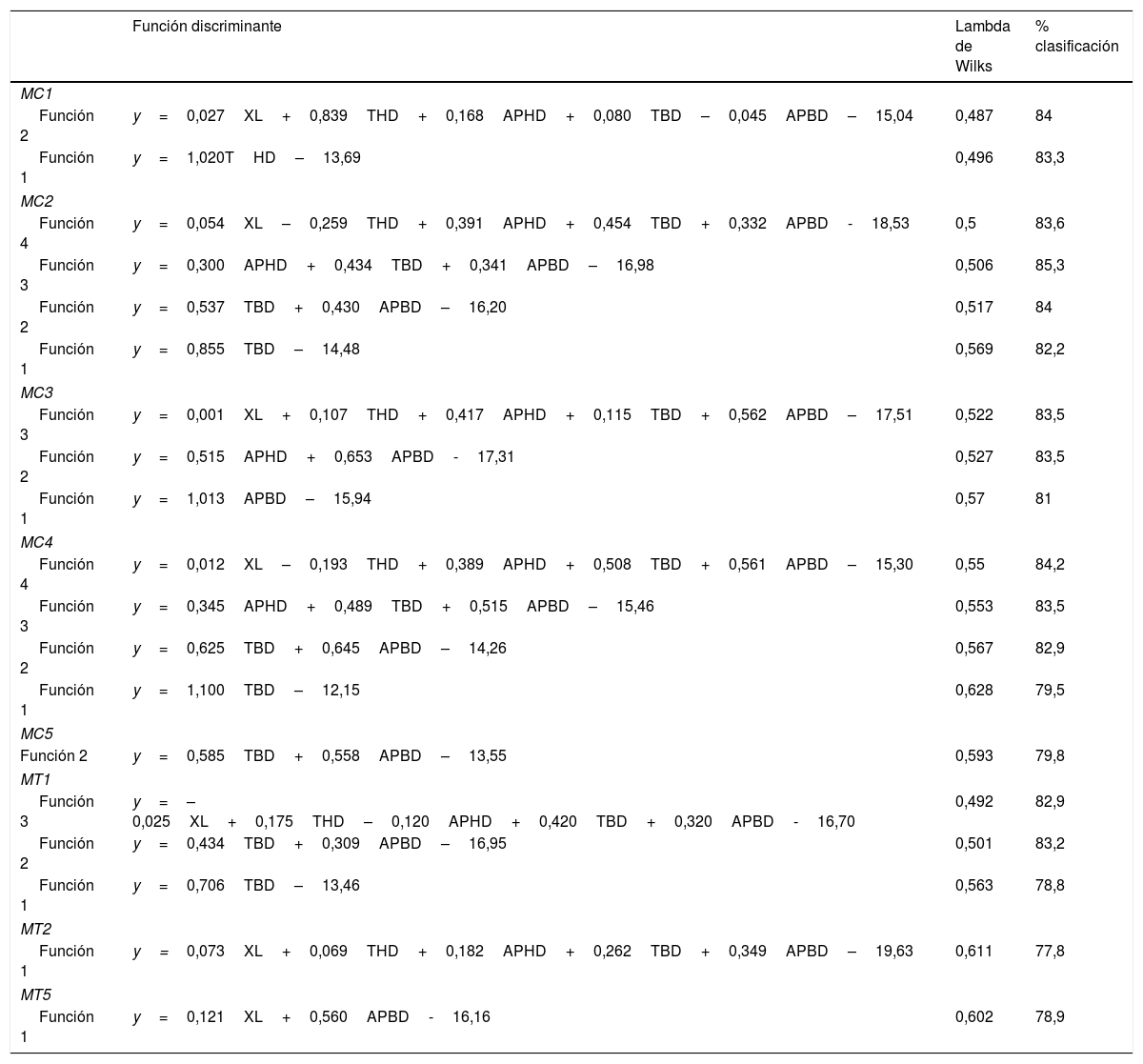El objetivo de este estudio fue la obtención de funciones discriminantes para estimación del sexo a partir de mediciones directas en metacarpos y metatarsos para contribuir en la identificación de individuos desconocidos.
Material y métodosSe analizaron métricamente los metacarpos y metatarsos de 112 esqueletos adultos contemporáneos (49 femeninos y 63 masculinos) de la Colección-UNAM del Laboratorio de Antropología Física, Facultad de Medicina, UNAM. Empleando un vernier digital se tomaron 5 medidas (longitud máxima y 4 anchuras) en cada uno de los huesos del metacarpo y del metatarso.
ResultadosSe desarrollaron 14 funciones discriminantes para los metacarpos, con porcentajes del 79,5% a 85,3% de asignación sexual correcta, siendo el segundo metacarpo el hueso más dimórfico de la muestra. Para el caso de los metatarsos se obtuvieron 5 funciones que van del 77,8% al 83,2% de certidumbre, siendo el primer metatarso el hueso más dimórfico. De manera general, las anchuras en ambas epífisis fueron las medidas más dimórficas.
ConclusionesLas funciones discriminantes de metacarpos y metatarsos obtenidas presentan, de manera general, porcentajes por encima del 80%, lo cual concuerda con lo reportado para otras poblaciones; por lo tanto, pueden ser utilizadas en contextos forenses para la identificación humana, en restos completos o fragmentados, en el caso de no contar con otro elemento óseo, como la pelvis.
The aim of this study was to obtain discriminant functions for estimating gender from direct measurements of the metacarpal and metatarsal bones for identification of unknown individuals.
Material and methodsAn analysis was performed on metacarpal and metatarsals bones of 112 adult contemporary skeletons (49 females and 63 males). The sample belongs to the Autonomous University of Mexico (UNAM) Collection from the Physical Anthropology Laboratory, UNAM Faculty of Medicine. Five measurements were taken (maximum length and four widths) of each metacarpal and metatarsal bones employing a digital calliper.
ResultsFourteen discriminant functions were developed for metacarpals with percentages from 79.5% to 85.3% of correct gender classification. The second metacarpal was the most dimorphic of the sample. For metatarsals, five discriminant functions were obtained, ranging from 77.8% to 83.2% of certainty. In this case the first metatarsal was the most dimorphic. In general terms, the widths of both epiphyses were the most dimorphic measurements.
ConclusionsThe discriminant functions of metacarpal and metatarsal bones obtained are generally above 80%, which is similar to reports from other populations. Therefore, it can be used in forensic contexts for human identification with complete or fragmented remains, in the cases where no other bone element is available, such as the pelvis.










